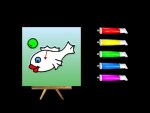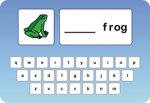Products that match: Alternative Controls
230 Results
Note: Changing any of the the sort, count or discontinued filters below will cause the page to reload.
Operating System
A Windows-based program developed specifically for students with special needs that introduces many different concepts while the student enjoys coloring pictures.
A miniature USB-based switch controller for two selected mouse actions, two selected keyboard inputs or one mouse action and one keyboard input.
A sip-and-puff switch that requires no power source.
A free, Windows-based program that enables people with severe physical disabilities to use their eyes to play Minecraft.
An open source Windows ability switch enhancer for any switch interface.
A free Windows utility that enhances a switch adapted mouse by providing auto-scan and other features especially helpful for single-switch access.
A free, open-source multi-purpose on-screen keyboard. It was designed with the needs of handicapped persons in mind.
An assortment of 15 early learning and special education interactive software created for switch use. Each program includes accessibility controls for switch use.
An on-screen keyboard designed to work on any sized device and for people with big fingers or grasping difficulties. It forgoes the QWERTY layout for a single-line of characters. It automatically autocorrects misspelled words and continues to "learn" the user's typing patterns.
Keyboard interface program designed to allow a mouse or any other pointing device to operate within Windows without, or as an addition to, a keyboard.
On-screen keyboard program designed for industrial and commercial applications to allow a mouse or any other pointing device to operate within any Windows program without, or as an addition to, a keyboard.
An on-screen keyboard program designed for use by people who have limited mobility, such as people suffering from muscular dystrophy, multiple sclerosis, stroke, or similar handicaps or disabilities.
A chin, lip, or tongue mouse controller designed for use by individuals with severe physical or neurological disabilities, upper extremity amputation, or spinal cord injury.
Software that uses a phonetic approach to help spelling-disabled children and adults spell better. Instead of spelling words by trying to remember the letter sequence, users spell the words based on what they sound like.
A free communication environment featuring an on-screen keyboard designed for use by individuals who cannot use a keyboard or mouse.
A neon stretchy noodle switch.
A lip, tongue, chin, finger or toe-operated USB mouse designed for individuals with spinal cord injury or upper extremity amputation or disability.
An introduction to the keyboard by using speech, phonics, and Widgit Symbols in colorful letter exercises to teach literacy skills to users who have difficulty with text or communication.
A low-profile mechanical switch that requires a few grams of pressure to activate. With a click sound to signal activation, it sits on a slightly angled platform for easier access.
Switch that provides a range of activation distances. Proximity sensors can be activated when a body part comes into its range without actually touching the switch.
A switch that works best when the eye-blink is the only movement the user is able to perform. The sensor is capable of discriminating between random eye-blinks and a purposeful, controlled eye-blink.
A round switch suitable for users who need to use their head to activate a switch.
A general-purpose switch. This proximity sensor is small enough to use as a head switch and sensitive enough to activate through a padded headrest or lap tray.
A switch that has a small package size and can easily fit into small places.
A Plug'n'Play device that can turn on and off all types of devices and contact-based devices, either via a BJ control or an external switch.























